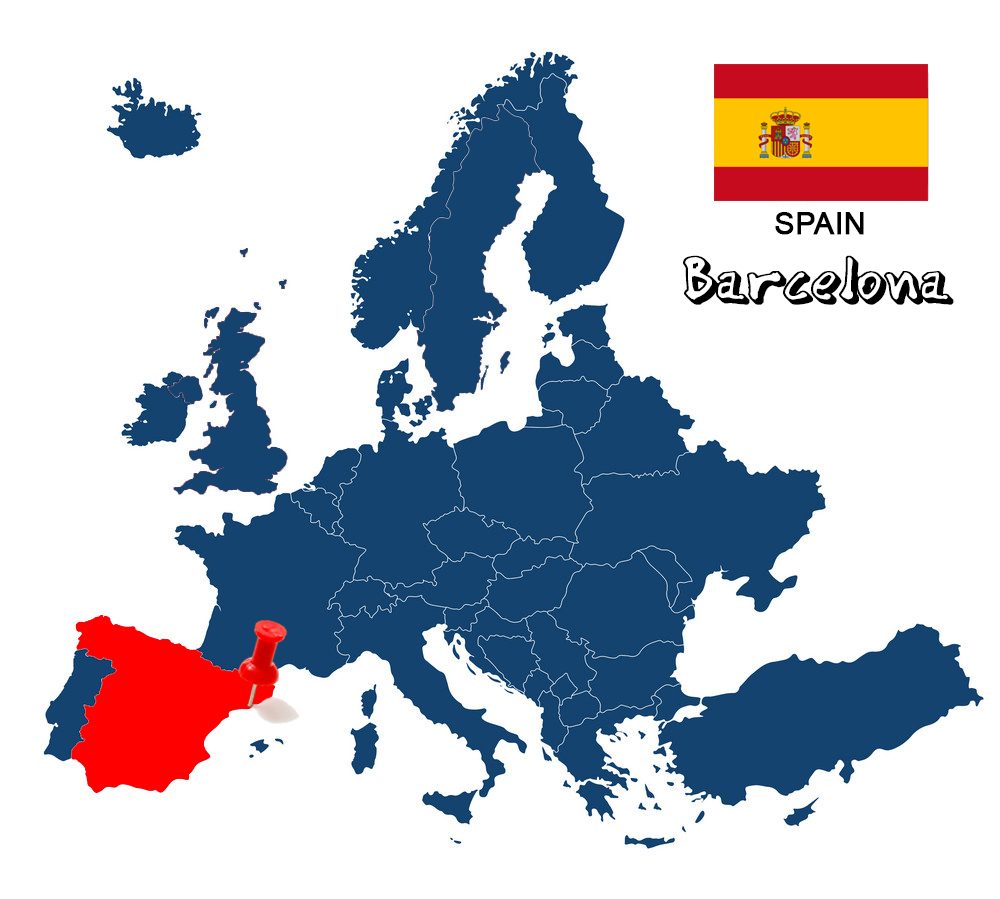
My trip to Barcelona will always hold a very important part in my heart, since it was the first trip that I put aside security and safety, testing my limits. I would say that it was the beginning of what followed, since without parents, without a group and without much money, my sister and I created so many pleasant memories, which we still remember today. I do not usually say that I will return to a city, as my motto is that "the world is so big and we have so little time to discover it", but this city was from the beginning for me, the exception to the rule. A metropolis that escapes stereotypes and combines the old with the new, almost to the superlative degree. I do not know if your visit to Barcelona will give you the same feelings, but I know very well that it will surpass even your wildest expectations.
A few words about the city
Barcelona is located in northeastern Spain and is the capital of the self-governing region of Catalonia. Today it is the second most important city of the Spanish state, in terms of population and economy, after the capital Madrid. The metropolitan area has a population of 5 million inhabitants, of which 4.5 million live in the 36 municipalities of the urban area, which makes it the largest metropolis of the wider Mediterranean area. Many argue that Barcelona exudes a surreal feeling, which is not surprising when you consider that Salvador Dali lived there, while several buildings in the town are designed by Antonio Gaudi. The capital of Catalonia perfectly combines seaside walks, high aesthetic art and architecture, delicious Mediterranean flavors and, of course, intense nightlife. So I have chosen for you, what I consider to be worthy of attention for someone who is visiting the city for the first time.
La Sagrada Familia
The Church of the Holy Family (La Sagrada Familia) is without any doubt the hallmark of the city. This is Gaudi's latest and greatest work, which has left its indelible marks on the city. Barcelona's most iconic construction began in 1882 and has not yet been completed, and it is very likely never to be completed! According to some recent reports, it is estimated that construction will be finished in 2026, one hundred years after Gaudi's death. The impressive thing about this temple is that wherever you look at it, it is impressive and at the same time different, because of the many architectural views, after the death of the Spanish architect. The facade that symbolizes the birth is reminiscent of a sculpture on the sand, while the huge spires seem to touch the clouds. The entrance costs 12,5e, while if you want to climb the bell towers you will have to pay an additional 2,5e.
Palau Guel
Gaudi's acquaintance with Eusebi Guell in the late 19th century was destined to lead to a series of architectural masterpieces. One of the first was the Guel Palace (Palau Guel), located in the heart of the capital of Catalonia. The second, as a businessman and an art lover, he asked Gaudi to design a quirky urban Palace, as an extension of his home in the area of La Rambla. The Guel mansion was built in 1886-1890 and is a brilliant example of Art Nouveau architecture, which apart from functional, as it served the needs of the Guel family until they moved to the Guel Park, is characterized by innovative perception of space and light. Admission costs 12e.
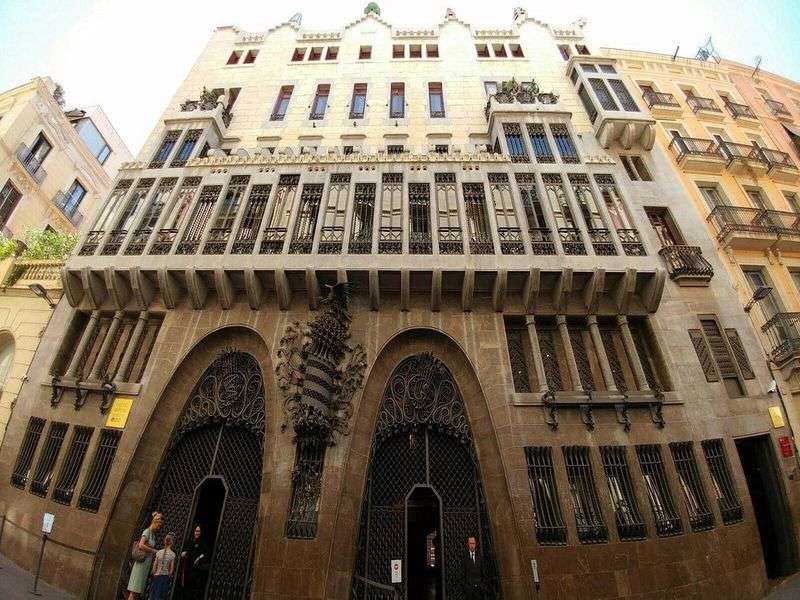
Park Guell
Ten years after the creation of the Guel Palace, Gaudi took over the design of the Park Guel on the hill "el Carmel". This is definitely the most unusual park you will ever see in your life! Arriving there you will realize that nature and architecture are integrated in complete harmony and you will admire various masterpieces of the famous architect, most important and popular The Lizard-Dragon, which is made of dozens of pieces of colorful tiles. Due to the altitude, the view is dazzling, as it gives the opportunity to the visitor to see the whole city from above; perhaps that's why Gaudi himself lived in one of the two houses located there. To be sure that you will enter, it is advisable to book your tickets online (they cost 12e), as due to the high traffic often prevails the inseparable.
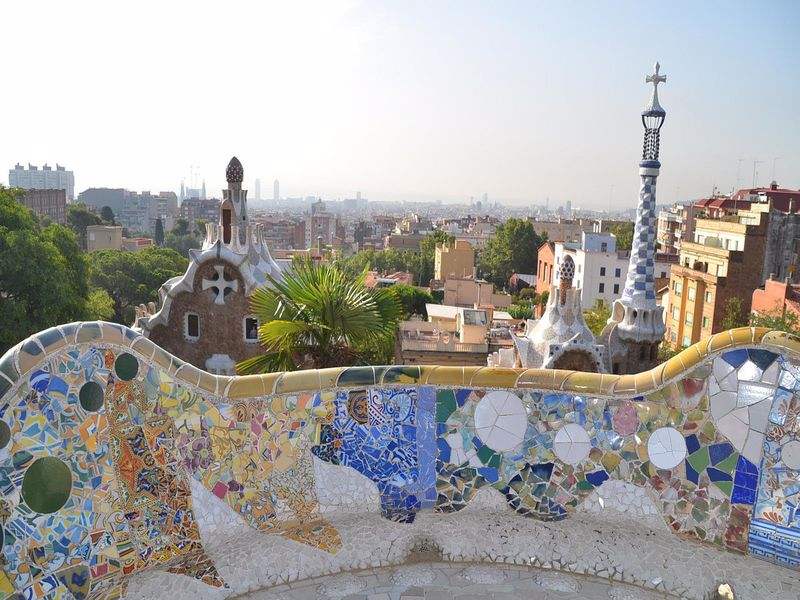
La Rampla
The most famous pedestrian street and the heart of Barcelona is called La Rambla. It was designed in 1766 and from the beginning was a meeting place for all social classes of the city. Starting near Placa de Catalunya and 1.2 km long, Barcelona's most touristic pedestrian street "meets" the sea at the Columbus Monument (Mirador de Colom). The traffic is constant, both by locals and tourists crossing the pedestrian road between the dozens of cafes and restaurants, while there is a plethora of street vendors and artists. Sitting down to dine in one of the shops along the sidewalk may not be the best choice, as these are mainly tourist shops that are clearly more expensive and of lower quality than the neighborhood ones. However, if you are not a fan of the crowds, it would be good to avoid La Rampla, as in addition to a lot of people "lurking" and pickpockets, waiting for a little carelessness to steal your personal belongings.
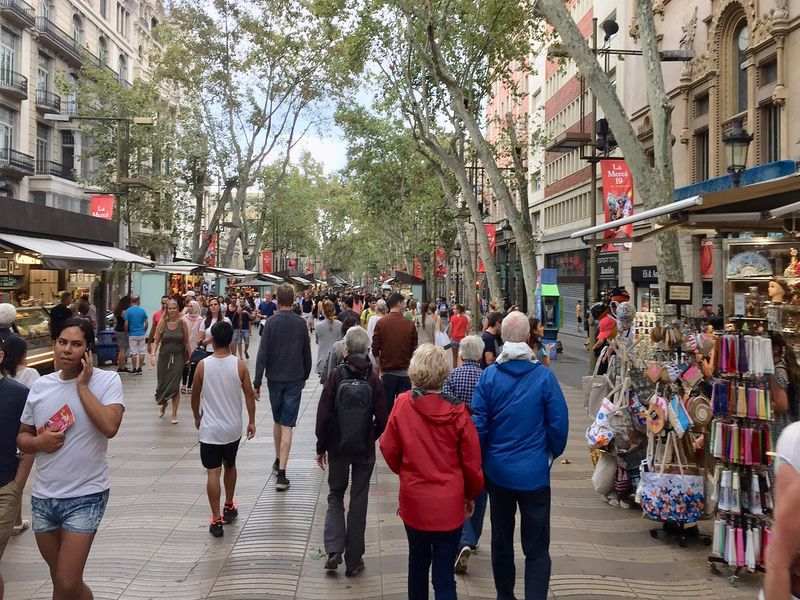
As you cross La Rampla, you will encounter the historic opera, Gran Teatre del Liceu, which opened its gates on April 4, 1847 and the La Boqueria market. Barcelona Central Market is one of the most beautiful sights in the city, as it will captivate all your senses and introduce you to the Catalan tradition and culture. It began to operate in March 1840, and already in the 13th century there were sellers selling meat in the place where the Central Market is today. So feel free to try the local delicacies, which only there you will find in the city.
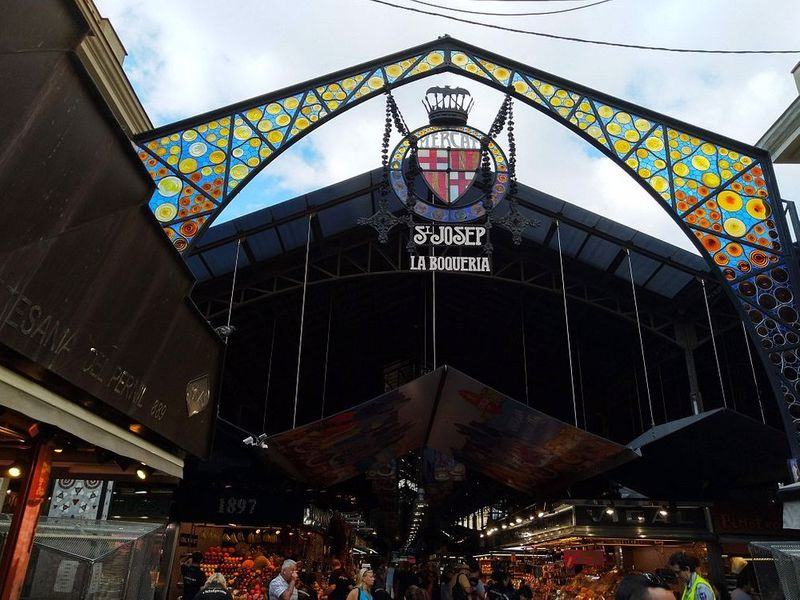
Montjuic- Poble Espanol
The green hill of Montjuic, which you can reach by cable car or on foot (for the more athletic), is one of the most characteristic spots of Barcelona. The world's exhibition of 1929 was the reason for the reconstruction of the hill, which until then had passed through many phases such as fortress, prisons and as a garden for food production for animals and people. In fact, Montjuic was the heart of the 1992 Olympics. It was then that most of the buildings and attractions of the area were built, such as the Olympic Stadium (Estadi Olimpic Lluis Companys), the Magic Fountain (Font Magica) and the imposing steps that connect the Palau Nacional with the avenue of Queen Maria Cristina.
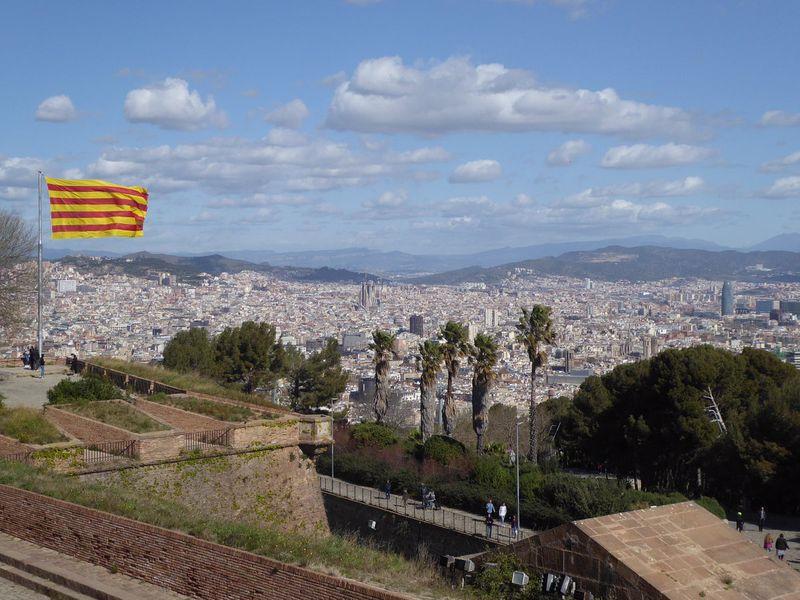
The National Palace (Palau Nacional), today houses one of the largest and most famous museums in Europe, the Museum of National Art of Catalonia (Museu Nacional d'art de Catalunya) or as the locals call it MNAC. The building dates back to 1934, but was declared a National Museum in 1990, renovated due to the Olympic Games in 1992 and reopened its gates only in 2004. It hosts a magnificent collection of Roman paintings dedicated to Catalan art and design, from the late 19th and early 20th centuries, including modernism and nucetism. Admission costs 12e.
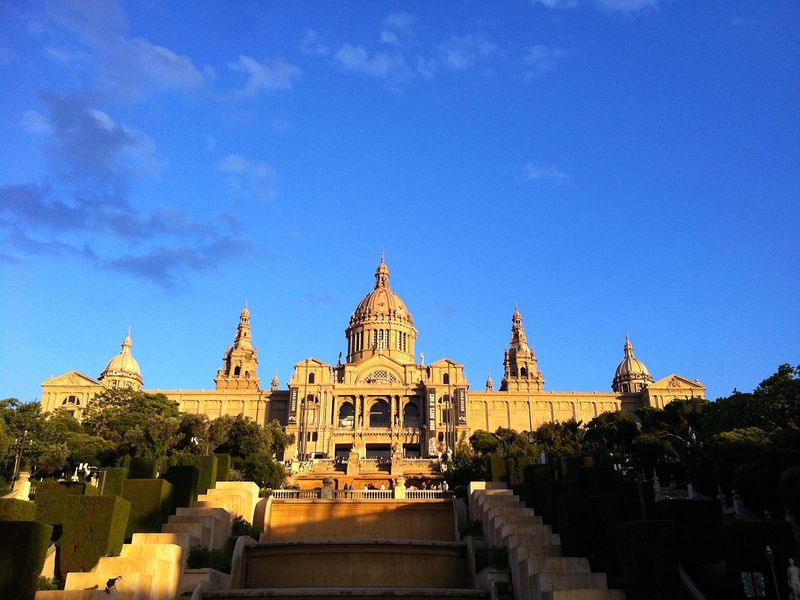
If the weather permits, the place is ideal for walking and cycling with views across Barcelona. On the hill there is also the Botanical Garden of the city (Jardin Botanico de Barcelona), as well as a beautiful castle of 1640 (Castell de Montjuic), which also functioned as a prison in the Franco years and today houses the Military Museum (Museo Militar).
Your excursion to Montjuick Hill can be ideally combined with a visit to the Spanish Village (Poble Espanol). The Spanish Village was built in 1929 for the international exhibition aimed at gathering the "Spanish soul" in one space. It is a theme park, depicting the whole of Spain in miniature, with 117 buildings in natural size on an area of 42,000 sq.m., built according to the dictates of the local architecture of each Spanish region. Most of the structures remain intact until today. It is open all year round and from time to time various events are organized for all ages, making it an ideal destination for those traveling with children. Within the Spanish village there are more than 20 craft workshops, where you can buy unique pieces of pottery and special gifts of glass, leather and jewelry. Admission costs 14e.

Barri Gotic
The Gothic Quarter (Barri Gotic) is the most historic and perhaps the most beautiful area of Barcelona, which has existed since Roman times. The scenery looks like a maze, which will surely take you back in time. Set aside maps and smartphones and wander among the medieval buildings, small alleys and various stores, which are mostly antique shops.
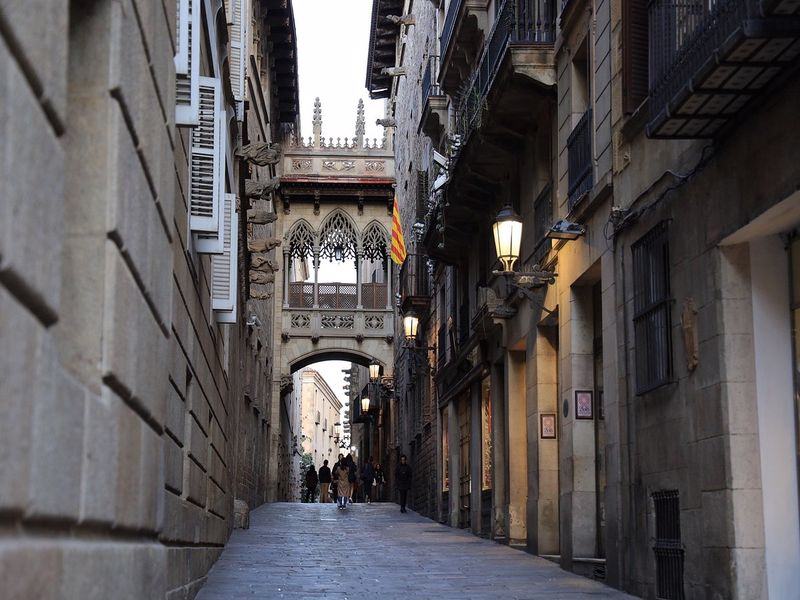
There you will find the Town Hall (Palau de la Generalitat), the Cathedral of Barcelona (Catedral de la Santa Creu i Santa Eulalia), which is dedicated to Saint Eulalia and is the seat of the Archbishop of the city, as well as other impressive Gothic churches, such as the Church Of Our Lady Of Pi (Santa Maria del Pi). Inside the latter, you will find Catalonia's most important medieval collection of gold and silver religious objects. Also, you will have the opportunity to "get to know" the giant figures, Gegants del Pi. They are thought to be the oldest to exist in Catalonia. Your visit to the Santa Maria del Pi royal church is bound to close with an ascent to its bell tower to enjoy views of the heart of Barcelona. The entrance to the church costs 4.5e and the bell tower 9e.
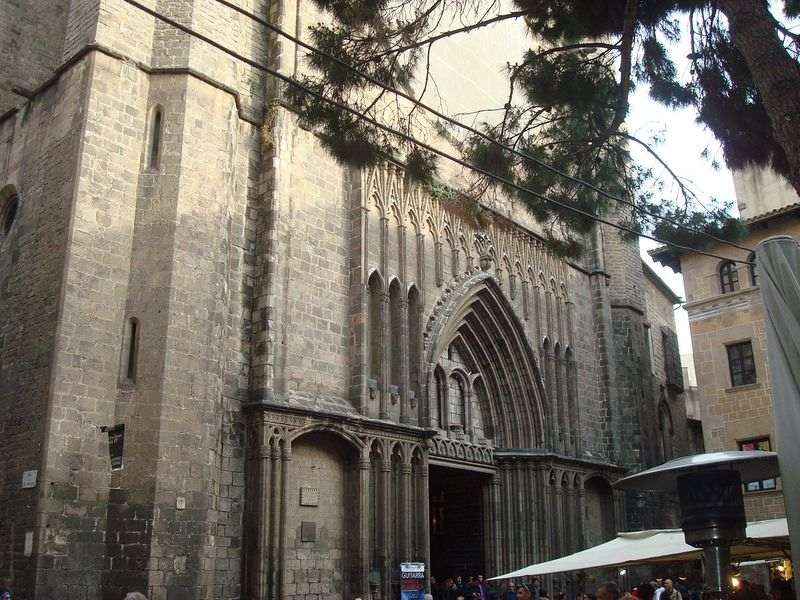
Casa Mila-Casa Batllo
Casa Mila, also known as La Pedrera, is one of Barcelona's most famous tourist attractions. It is an apartment building, designed apparently by Antonio Gaudi, built between 1906 and 1910 for the family, whose facade resembles a moving sea. It was his last urban project before dedicate exclusively to Sagrada Familia and is considered innovative in terms of amenities in modern construction. Like the other avant-garde, modernist creations of Gaudi, it is characterized by a very special blend of imagination and functionality, which make it a must-see attraction. Inside there is a museum for the Spanish architect, while if you climb to the top you will admire, apart from the sublime view, the surreal chimneys-sculptures, resembling Warriors! Admission costs 22e.
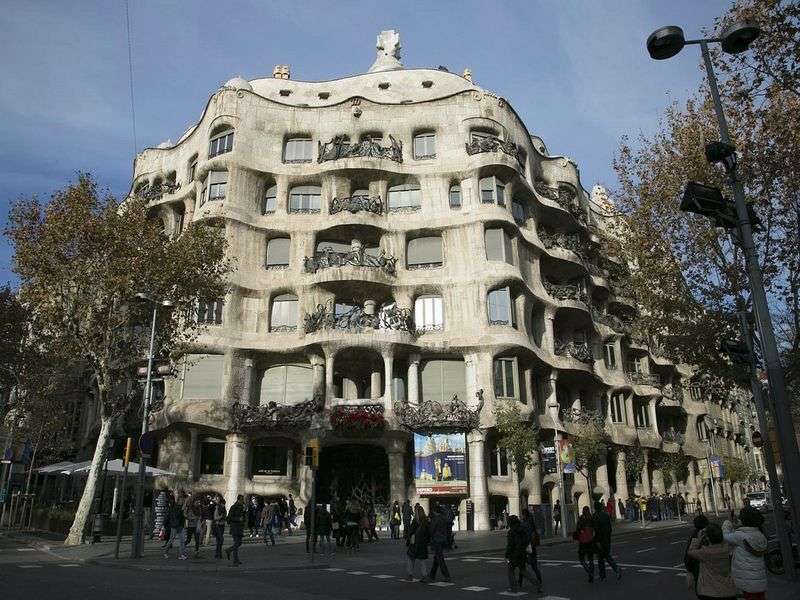
Another building of Gaudi that you should not miss is Casa Batllo or as the locals calls it “Casa dels ossos” (the House of bones). This particular attraction is impossible to pass by without noticing it, since both its appearance and the people who flock outside, will make you stop to look at it. It is the home of the Batlo family, built in 1877, at a time when Gaudi seems to have had "underwater" concerns. No matter how much you search the house you will not find straight walls. Everything is carved in such a way that the curves create the illusion of waves. Blue and colored stained glass intensifies this feeling, as the sun's rays pass through them! Admission costs 23.5e.
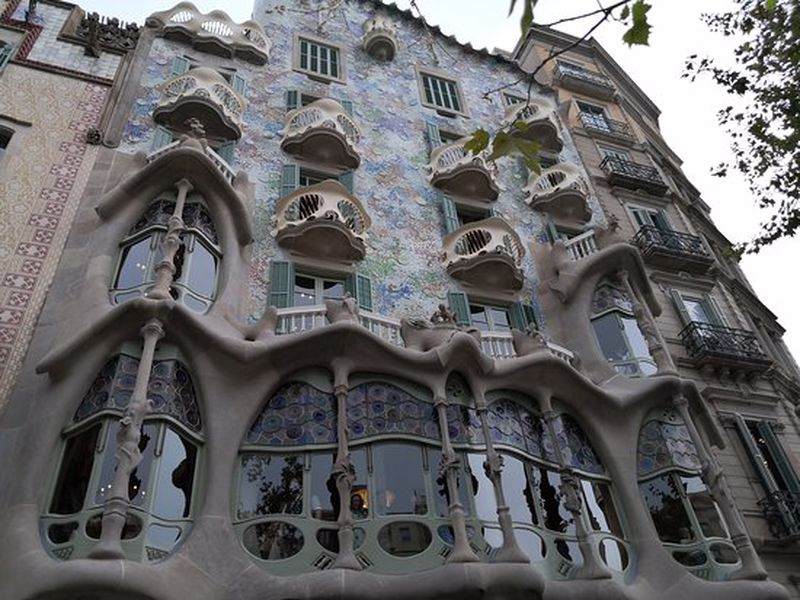
La Barceloneta
Barcelona’s beach (La Barceloneta), was declared the best urban beach in the world by a Discovery Channel documentary in 2005. It is the most famous and the closest coast of Barcelona, which can be reached either by Metro or on foot, since it is quite close to the center. What makes this beach stand out is the golden sand, the blue water and the excellent restaurants located in the coastal zone. The once fishermen's neighborhood has transformed into the most popular district of Barcelona, where summer is the most undistinguished. There are also some of the most famous clubs in the city, making the area an ideal place for anyone who wants to experience Barcelona's nightlife.
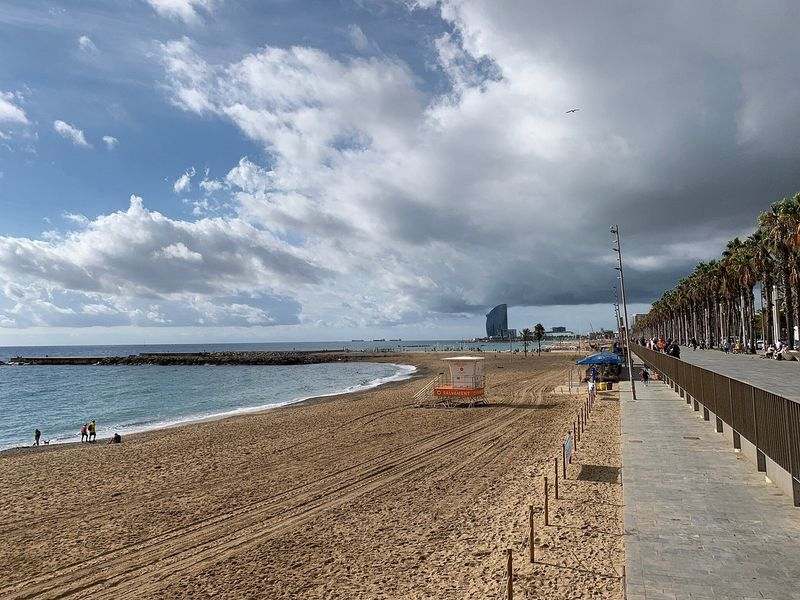
MACBA
Even if you are not a fan of Modern Art, the famous MACBA or Museu d'art Contemporani de Barcelona, as its full name is, is an attraction in itself and should not be missed. It begins in a gothic chapel and continues in a modern building, whitewashed from end to end. Permanent and periodic exhibitions in its halls ignite the familiar debates about what is ultimately art and what is not. If modernism is too much for you, you can always turn to the works of classical modernists (!), the Picasso Museum (Museo Picasso) and the Juan Miro Foundation (Fundacio Joan Miro). Admission costs 11e.
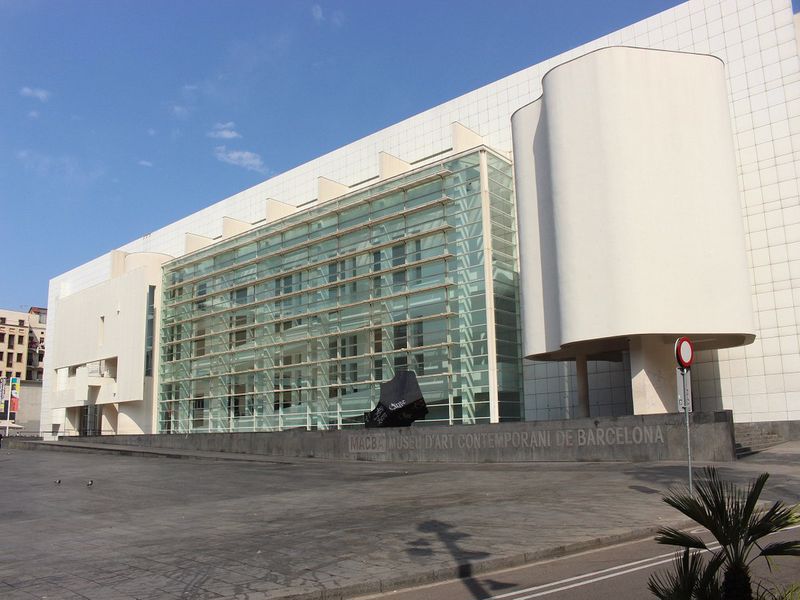
Camp Nou
For football fans and not only, a visit to Camp Nou is inevitable, which is the headquarters of the city's largest football team and one of the greatest in the world, Barcelona FC. This arena is among the top of the planet (5 stars according to UEFA) and is an important attraction of the city. It would be ideal to combine this visit with watching a football match, which of course is difficult considering that most tickets are sold from the beginning of the year. Nevertheless, the visitor has the opportunity to see up close the museum of the stadium, where all the trophies of the team, the locker rooms, the press room, the stands and all the important parts of the stadium are exhibited. The entrance and the tour in the interior of the stadium cost 26e.

L’Aquarium de Barcelona-Ζοο
I have visited dozens of such aquariums in my life, but I have to say that this one is the best I have come across. The Barcelona’s Aquarium (L'aquarium de Barcelona) is the largest marine park in the Mediterranean and the second largest in the world. It is housed in a very beautiful building that hosts the most representative species of marine life. For the most adventurous visitors, there is the possibility, with the help of the divers of the park, to dive into the tank with the sharks and live an unforgettable experience. Admission costs 20e.

If there is time in the program, is also interesting the visit to the Zoo of Barcelona, located in the south-eastern part of the Ciutadella Park (Parc de la Ciutadella) and hosts more than 200 species of animals. The Barcelona’s Zoo has been operating since 1892 and for years was known worldwide for the Snowflake, which was the only known gorilla with alfism, who died in 2003. Admission costs 21,40e.

How to go
Unfortunately, there are no direct flights from Thessaloniki to Barcelona, so your options are two. The first is to get to the city through a stopover by air. The best choice is that of Air Serbia, via Belgrade, where with proper planning one can find tickets from 96€ round trip. The second option comes from Ryanair and is a flight to Girona, located quite close to Barcelona, about an hour by bus. In this case you can find tickets starting from 53€ round trip.
Where to stay
Barcelona is a big city, with a strong tourist interest, especially in the summer months, which implies with several options in accommodation. The ideal option is to find something in the city center, that although the prices are a bit higher, you will be closer to everything. So my suggestion is the Hotel Viladomat, a three star hotel, located in the city center and offering excellent value for money.
How to move
The most ideal means of transportation in Barcelona is the metro, which has four lines and serves most parts of the town. Beyond that, buses are also very easy to use, serving many routes, with several night routes, which are convenient if you wish to discover the nightlife of the city. For the suburbs and surrounding areas, there is the suburban, while yellow-black taxis are relatively cheap, but you may find it difficult to consult with drivers, since older people do not speak English. To climb Montjuick Hill and Tibidabo hill, you will need a cable car, and finally Barcelona is a cyclist-friendly city, so don't hesitate to rent one if the weather is good.
What to eat
The Spanish cuisine and in our case the Catalan, combines wonderfully the mountain with the sea and its flavors are very close to Greeks. The dish you should definitely try is the famous Paella, which is essentially a pilaf made of rice and saffron, in which seafood and vegetables are usually combined. Of course, the famous tapas have a special place in the diet and culture of the Spaniards. Tapas are not a specific dish; I could only describe it as appetizers. It is traditionally a slice of bread that has something on top (cheese, chorizo, omelet, saganaki risotto, boiled potato etc.). Finally, since you are in Spain, do not forget to try Sangria, a red wine with chopped fruits and often juice other ingredients such as orange and cognac.
Useful information

In Spain we travel with a passport or a new type of Police ID, where the details are indicated in Latin characters.
In Barcelona the language used is, of course, Spanish and more specifically a dialect of, Spanish. This means that communication is a little bit difficult, since English is a language unknown to Spaniards, let alone Catalans! However, with a little goodwill, anything is possible.
The currency of the country is the euro.
Barcelona is an hour behind Greece (GMT +2).
Getting to and from Barcelona airport is simple, since there are continuous train and bus services (Aerobus), costing 5.90e. If you choose the option of Girona Airport, you will find outside buses that will take you to the main train station with 16e.
The Greek Consulate General in Barcelona is located at 6 Calle Freixa Street, 08021 and its phone is (0034) 93 2002036.
Take care of your personal belongings as in Barcelona there is an increased risk of pickpockets and other small scammers.
The climate in Barcelona is very similar to that of Greece, with mild winters and warm summers. If you visit the city in the summer, you will have the opportunity to enjoy the beautiful beaches, but there are so many people everywhere (especially in August), from museums and attractions to the metro and shops. So the ideal visiting period is from May to June.
Recommended excursions → Girona, Figueres, Zaragoza

If this article seemed interesting or contributed to your quality information, then you can like my facebook page: o_thessalonikios or follow me on instagram!
Mouzakidis Pantelis








